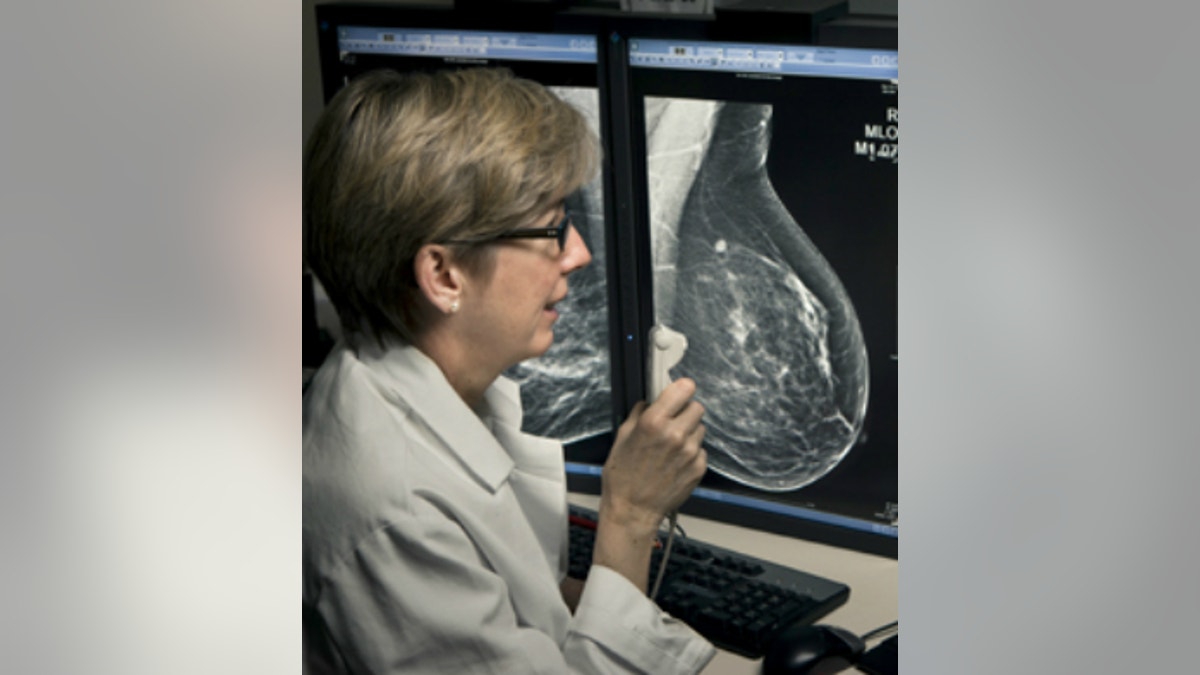
3D mammography detects more invasive cancers and reduces call-back rates. (Penn Medicine)
Mammograms may be one of the best tools doctors have to detect breast cancer – but the procedure still comes with many limitations. Not only do mammograms frequently produce false-positive results, but in many scenarios, mammograms may appear normal even though breast cancer is present, leading to numerous missed diagnoses.
But now, there may be an alternative option that can address these shortcomings. In a new retrospective study published in the Journal of the American Medical Association (JAMA), researchers revealed that an enhanced version of the procedure known as 3D mammography can significantly detect more invasive cancers than the traditional mammogram. Additionally, 3D mammography – also known as tomosynthesis – greatly reduced call-backs for women to undergo secondary imaging.
The researchers hope their analysis will encourage much more extensive use of tomosynthesis for cancer detection, as well as inspire health care providers to cover the cost of the procedure. Lead study author Dr. Emily Conant noted that 3D mammography provides a much clearer picture of overall breast tissue.
“Many people have compared it to looking at a book; you can see the cover but you can’t see the information inside. That’s the 2D mammogram – there’s lots of info but it’s hard to see,” Conant, chief of breast imaging in the department of radiology at the University of Pennsylvania, told FoxNews.com. “But 3D mammogram allows you to flip through the pages.”
Tomosynthesis works very similarly to conventional digital mammography, in that the breast is compressed while an X-ray takes an image of the tissue. Yet rather than simply taking one 2D image, the X-ray beam moves slightly over the woman’s head, taking multiple images that are reconstructed by a computer into a 3D image.
The result is a much more detailed representation of what a woman’s breast tissue looks like.
“[On a monitor,] we’re actually able to scroll or leaf through the different layers of the breast tissue,” Conant said. “False positives, or things that look funny on a 2D image, are less frequent because we can scroll through. We also can find cancers that were obscured are hidden behind breast tissue.”
3D mammography was approved by the U.S. Food and Drug Administration (FDA) in 2011 to be used in conjunction with standard digital mammography. While many hospitals across the country have started using the technology, tomosynthesis machines are still very expensive and not all insurance providers cover the procedure for patients.
To better determine the procedure’s effectiveness, Conant and a team of researchers looked at 281,187 digital mammography examinations and 173,663 combined tomosynthesis and digital mammography exams from hospitals across the country. The data was gathered between 2010 and 2012, and included women from a wide range of breast cancer screening programs.
After examining the numbers, the researchers found that 3D mammography detected 30 percent more cancers overall, as well as 41 percent more invasive cancers than conventional digital mammography alone. Tomosynthesis also reduced the number of women who were called back for additional imaging due to false alarms by 15 percent.
“The unique thing about these outcomes is that they address the criticism of 2D mammography – too many false positives with not enough cancer detection,” Conant said. “…If we can make mammograms better, we can further refine who needs what when.”
Conant wants their research to raise awareness among women that 3D mammography is available and is an efficient tool for breast cancer detection. She also hopes the analysis will serve as a wakeup call to health care providers, prompting them to cover the cost of the machine for hospitals, as well as the procedure for patients.
“The uptake is rapid. Considering there isn’t reimbursement, every state has at least one of these units,” Conant said. “There’s a little over 1,000 units in the United States. Six million women will be imaged with the new technology this year, but certainly if reimbursement accompanied this, it’d be much more rapid.”




















